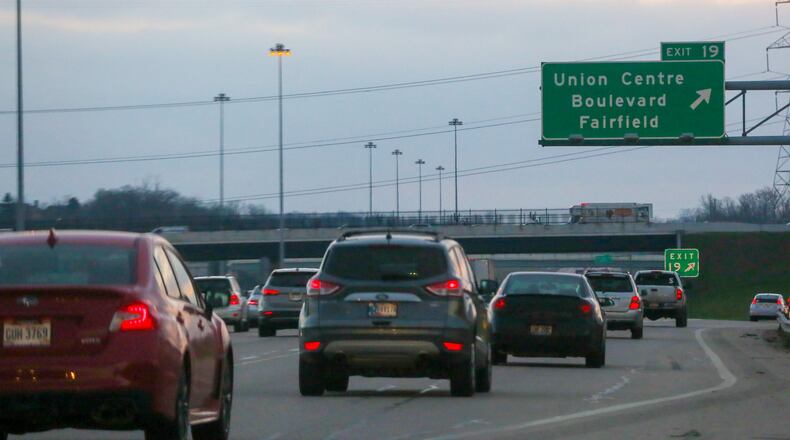The township could pay cash — there is $31.7 million in Union Centre tax increment financing (TIF) fund — for the project, but officials say it makes more sense to spread the cost — the bond life would be 16 years — to also include those who will benefit from the improvement in the future.
“We have the benefit that some communities might not right now, we could do this big project using cash, we’ve got that choice,” Finance Director Ken Keim said. “I have argued that it’s better for us to do these big projects, to borrow and match the benefit with the burden.”
MORE: What drivers, officials have to say about unique fix for Union Centre traffic
The Butler County engineer, who will manage the project, hasn’t gone out to bid yet, but if the approved contract is higher than the estimate, the township will pay the difference with cash from TIF funds.
TIF districts are an economic development tool that many townships, cities and counties use to encourage new investment in an area. A district typically surrounds a parcel or group of parcels and enables the taxpayers within it to make payments into a special fund in an amount equal to their property tax liability for the life of the TIF. The funds are mainly used for infrastructure projects like the interchange.
There is a cost to borrowing money — the interest rate won’t be known until the actual bond sale — but the township also earns money investing the TIF funds. Keim said he can’t put an exact figure to interest on the bonds versus investment income generated on $14 million, but the economic development benefit in the long run will be worth it.
The township collected $2 million in interest on investments last year, in all funds that generate interest, not just TIF.
Trustee Board President Mark Welch said he supports Keim’s strategy.
“That area down there is going to continue to develop, there’s going to be additional property taxes which are going to increase when development comes,” Welch said. “To let those folks help pay for it is great.”
The Union Centre Boulevard interchange is one of I-75’s busiest in the Cincinnati area, serving as a gateway to a business, entertainment and shopping corridor that is a regional draw due to attractions like IKEA and TopGolf and major employers like GE Aviation.
The diverging diamond design eliminates left-hand turns. How it does that can be tough to visualize. In short, the traffic pattern briefly sends cars over to the left side of the road. Drivers wanting to get on the interstate no longer have to wait for a left-turn signal: They simply veer off to the left as they cross the bridge and head down the ramp.
“It looks confusing maybe on the surface, but when you are in it, you just go with the flow and you won’t even recognize what’s really taking place,” Butler County Engineer Greg Wilkens previously said.
The project will begin this spring and is expected to take about eight months.
About the Author

